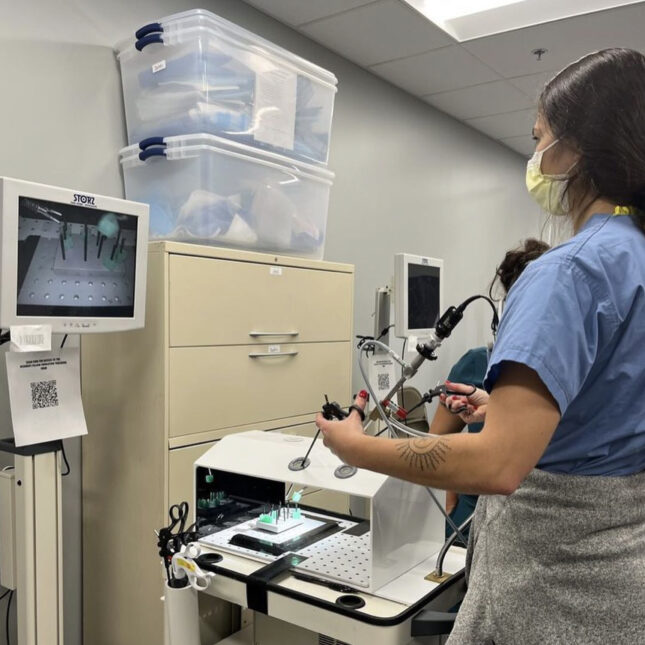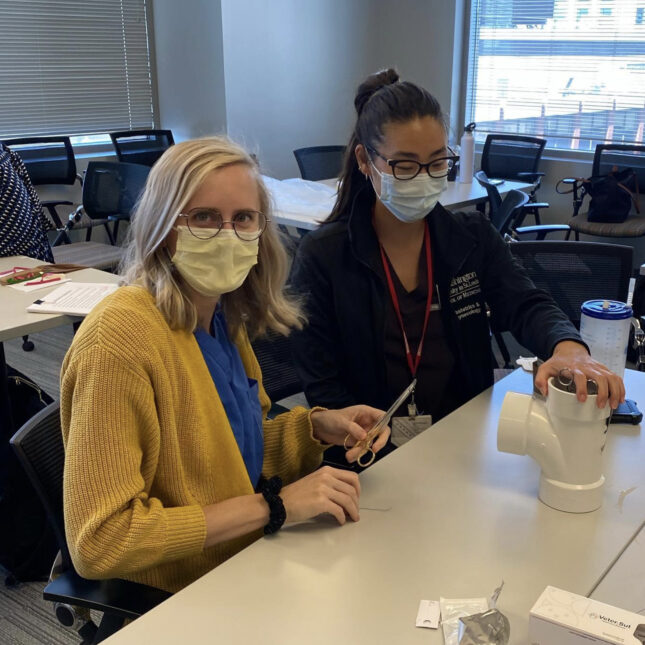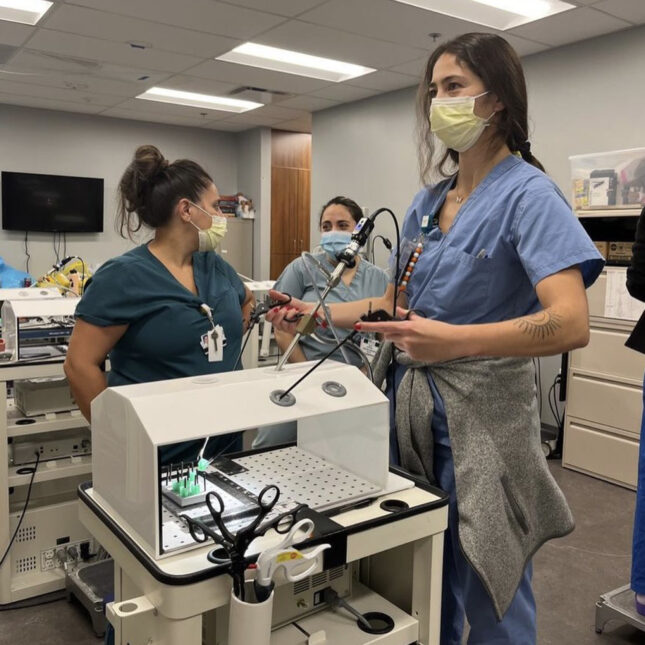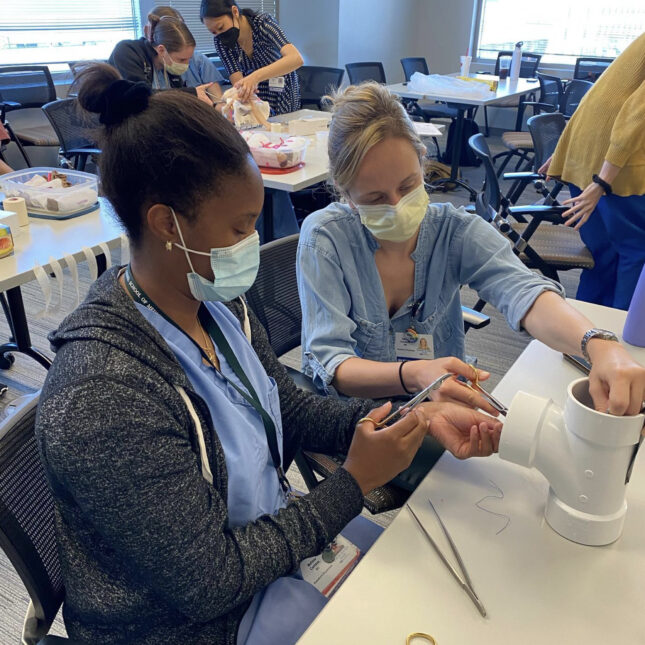




Clinical training
The format of the four-year program is as follows:
- Year 1: 12 months of multi-disciplinary experiences
- Years 2-4: 36 months of progressive responsibility in ObGyn, including one year as Chief Resident
Applicants starting immediately after medical school graduation will have first-year experiences in Colposcopy Clinic, Menopause Clinic, the Spot, Ultrasound, Pediatric, and Adolescent Gynecology Clinic, the Surgical Intensive Care Unit, and High-Risk OB Clinic.
The ObGyn clinical training consists of nine rotations each year, each rotation lasting 5 – 6 weeks.
We have 3 weeks of vacation each year, a holiday schedule, and Wellness Wednesdays occurring 5 times per year to allow for personal time for the residents. The residents also receive a development fund, conference days for scholarly activities, and interview days during their chief year.
Year 1
Year one is focused on inpatient ObGyn with a progressive introduction into ambulatory medicine. Interns have a full ultrasound rotation, learning Ob and Gyn scans from experts in the field. Residents can independently perform and interpret ultrasounds by the end of their training.
- Obstetrics (three rotations)
- Gynecologic Oncology
- Ultrasound
- Surgical Intensive Care Unit (SICU)
- GYN Nights (Mouse)
- Gynecology (Green Team)
- Ambulatory
Year 2
Starting with their PGY-2 year, each resident spends one-half day in Continuity Clinic, a resident-managed clinic attended by WashU faculty. Each resident manages their own Continuity Clinic patients and participates in our Sub-Specialty Clinics. Our residents experience first-hand how a clinic operates, how the business of medicine works, and how a medical team contributes to success. Residents encounter the social determinants of health, learn how to be advocates and develop skills to be the physicians of tomorrow. Additionally, residents in their second year will gain experience in the CARE clinic.
- Obstetrics (two rotations)
- Family Planning
- Benign Gynecology (Green Team)
- Ambulatory
- Gynecologic Oncology
- Antepartum Service (high-risk obstetrics)
- Urogynecology
- Reproductive Endocrinology and Infertility
Year 3
This year focuses on gynecology and gynecologic surgery. Residents experience independence while holding the consult pager. They have one elective rotation that is call-free and based upon interests of their choosing.
- Gynecologic Oncology (two rotations)
- Minimally Invasive Gynecology
- Surgical Float
- Benign Gynecology (Green Team)
- ER/Consult nights
- Urogynecology
- Elective
- Antepartum
Year 4
Residents experience managing a complex unit, interacting with different stakeholders, and encountering complex medical decisions while incorporating learners in the medical environment. Chief Residents develop into their own leaders, understanding the environments that intersect with the health of their patients. We have a ‘Float Rotation’ built into this year to help with needs throughout the residency and allow residents to experience parts of rotations they’ve encountered previously from a different lens.
- Chief of Obstetrics (two rotations)
- Chief of the Benign Gynecology (Green Team) Service
- Chief of the Antepartum Service
- Chief of the Gynecologic Oncology Service
- Float
- Minimally Invasive Gynecology
- Consult
- Ambulatory
Next: Read about our residents’ clinical experience »
Application process
Medical school graduates can enter the Obstetrics and Gynecology residency program immediately after graduation, applying through ResidencyCAS.